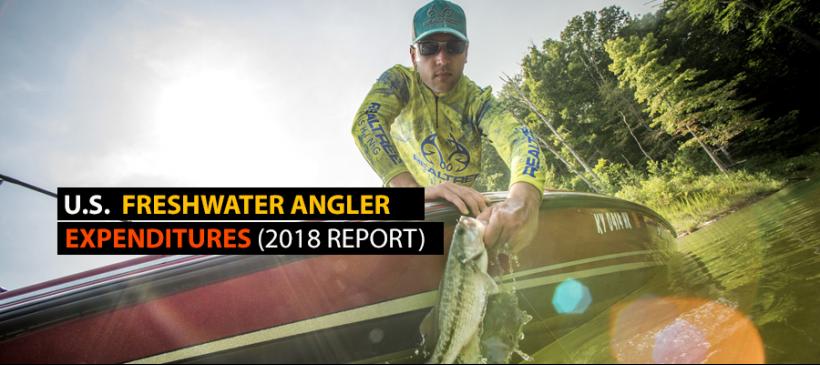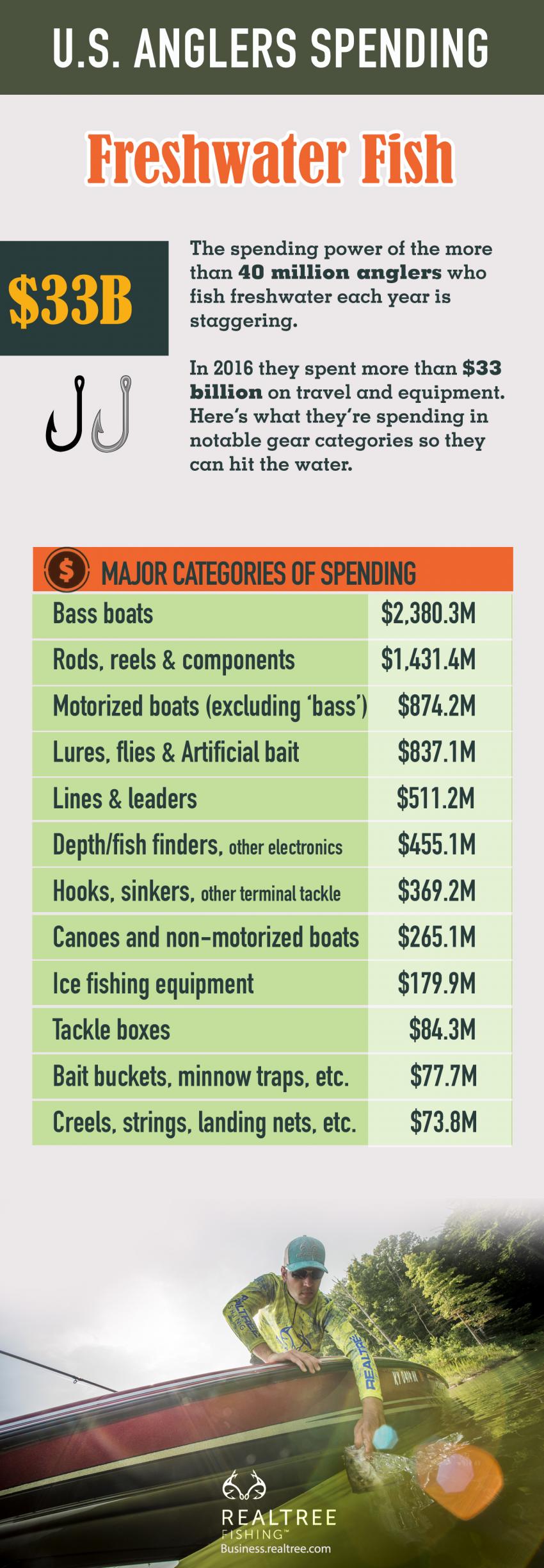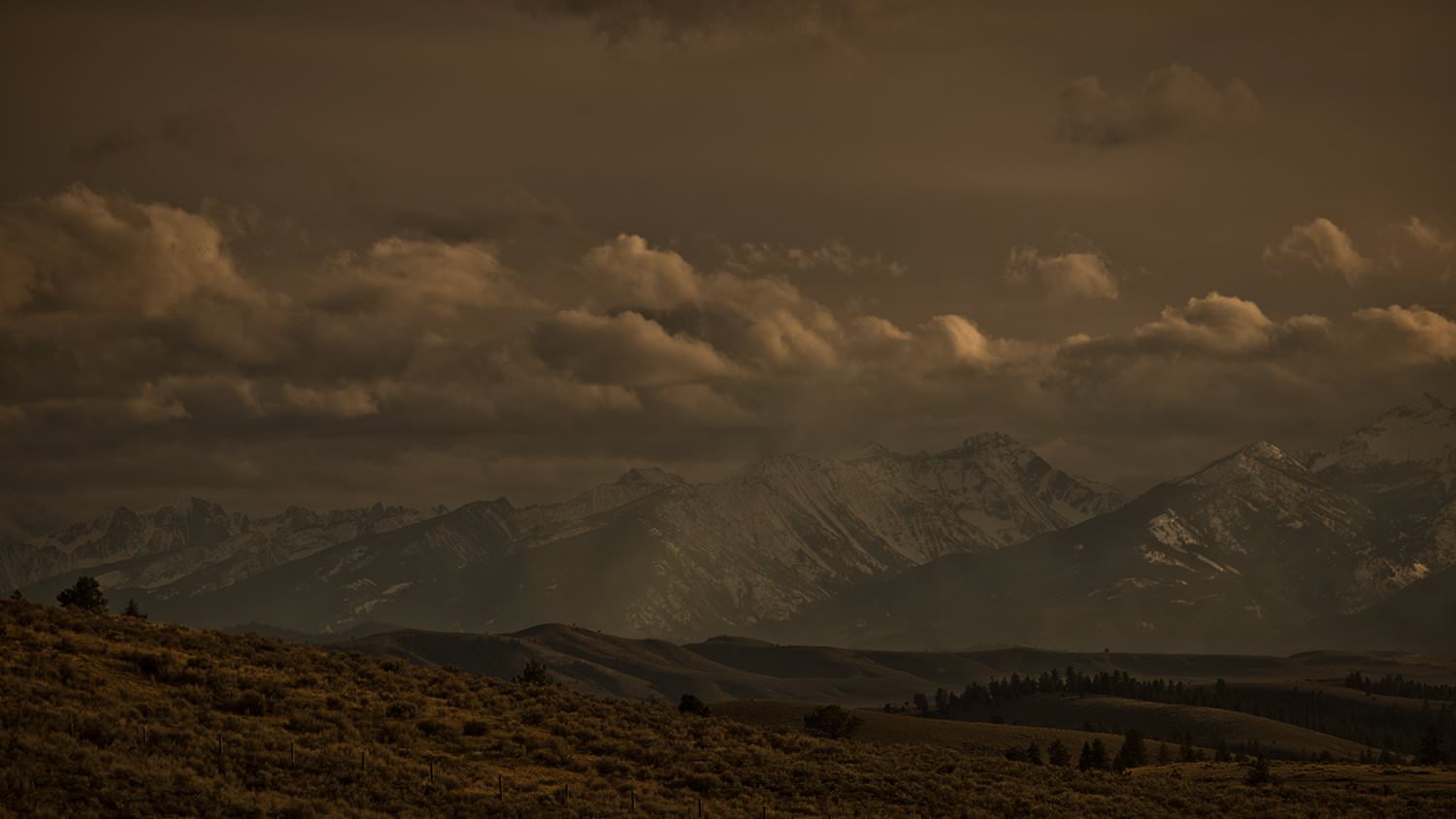Freshwater Anglers Spend Big on Their Sport
- February 25, 2019
- By Team Realtree
- Research

It’s no surprise to anyone in the outdoors industry that spending on sportfishing makes a sizable impact on the U.S. economy. We recently summarized a report from the American Sportfishing Association that shows anglers spent $49.8 billion on fishing gear and trips in 2016 (2018 report). In this post, we’ll take a closer look at how freshwater anglers, the largest sector in recreational fishing spend their money, and then we’ll follow it up with a similar report on saltwater anglers’ spending.
Big picture notables about freshwater fishing:
- Of all U.S. anglers, 84.1%, or 41.2 million of them, spent at least one day fishing a freshwater lake, river or stream in 2016.
- These fishermen and women spent $33,264,000,000 in retail sales*, which translates to a U.S. Gross Domestic Product (GDP) contribution of nearly $42 billion.
- All of that spending supports 526,000 U.S. jobs that pay $25.3 billion in salaries, therefore kicking in $6.2 billion in federal tax revenues and $4.3 billion in state and local tax revenues.
Expenditures by category for freshwater angling include:
Travel $13,516,800,000
Vehicles/Boats $9,390,600,00
Fishing Gear $4,453,000,000
Some of the most eye-popping spending totals in the above categories include:
Food $3,155,700,000
Lodging $1,952,400,000
Transportation $3,383,200,000
Bait $1,173,300,000
Pickups/campers,etc. $4,406,100,000
Bass boats $2,380,000,000
Rods and Reels $1,431,400,000
Fishing Licenses $1,242,300,000
These sample categories are presented here to put the scope of freshwater angling’s impact in perspective. They are based on 2016 reporting, the most recent available.

As mentioned in a previous post, multiple sources contribute to these calculations, which are compiled by Southwick Associates. These include the Outdoor Industry Association’s Outdoor Participation Report (2017), the U.S. Fish and Wildlife Service, and the Recreational Boating and Fishing Foundation 2018 participation report.
Also positive and noted in our last post on this topic but well worth repeating: The ability to detail the economic impact of angling is helped in part by the fact that in 2018, for the first time, the U.S. Bureau of Economic Analysis, the country’s official source for analyzing U.S. economic data, reported outdoor recreation as its own category. We now know that the outdoor recreation economy accounted for 2% of nation’s gross domestic product (GDP) in 2016 and that the category grew 3.8% that year, compared with only 2.8% growth of the overall U.S. economy.
Check back here often as future posts will outline some revealing findings on gear and other expenditures by U.S. anglers.
*Economic and expenditure data presented here is based on spending by anglers age 16 and older, which represents 87% of all anglers.
Editor’s Note: Whether you’re a retailer or manufacturer, our newest brand, Realtree Fishing, can help you grow your business! Contact us today to find out how!
Check out our recent market research reports:
- Freshwater Anglers Spend Big on Their Sport
- Economic Impact of Migratory and Upland Bird Hunting
- Rising Demand for Trail Cameras Continues
- Who is Today’s Rifle Hunter?
- Deer are No. 1 Driver of Hunter Spending
- Impact of Hunting on the U.S. Economy
- Top Sporting Goods Retailers for 2017
- Top 10 States With the Highest number of Deer Hunters
- 3 Trends Among Urban Hunters Will Surprise You
- Top 30 States with Most Active Duck Hunters in 2018
